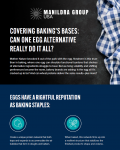FNCE hot topic: Is phosphorus the new trans fat?

While phosphorus is an essential nutrient found naturally in some foods such as egg yolk and milk, it is increasingly added to packaged foods via a raft of phosphorus additives as an anti-caking agent, to help preserve moisture or color, as a stabilizer, leavening agent or acidifier, Geoffrey Block, MD, told delegates at the Food & Nutrition Conference & Expo (FNCE) in Philadelphia last week.
And as manufacturers are not required to label levels on pack, we’re not sure how much we’re getting, said Block, who is director of clinical research at Denver Nephrologists.
Phosphate is incredibly important for cardiovascular disease risk
This is concerning, because serum phosphorus, even within what has traditionally been regarded as the ‘normal’ range, is now implicated as an independent predictive factor in mortality and cardiovascular disease for adults with or without chronic kidney disease, he said.
“What’s striking is that we know that people within a normal range of serum phosphate are at risk and they don’t even know it.
“The normal range needs to be reassessed. We now know that phosphate is incredibly important for cardiovascular disease risk.”
We know there is something about having high levels of FGF-23 that is bad for you
A better early predictor of trouble with kidney function (which can in turn affect cardiovascular disease risk) may be serum levels of Fibroblast growth factor‐23 or ‘FGF-23’, a hormone that regulates phosphate excretion in the urine, he said.
Studies have consistently shown that people with high levels of FGF-23 have a higher mortality risk, and excess dietary exposure to phosphorus is increasing FGF-23 levels, he said.
“We know there is something about having high levels of FGF-23 that is bad for you. If you restrict phosphorus levels in the diet, you can bring FGF-23 levels down, although they only go down slowly, especially if you have impaired kidney function.
“A better approach is not to let FGF-23 levels to go up in the first place."
Vascular calcification
But what has this got to do with heart disease?
If your kidney function is impaired, you will not be as effective at processing and excreting dietary phosphorus and your vitamin D levels go down, as FGF-23 negatively affects vitamin D production, he said.
And if the phosphate is not going into your bones or your urine, it could be going into your soft tissue and increasing your risk of vascular calcification, he said.
Meanwhile, if you give people with impaired kidney function extra vitamin D, this could increase FGF-23 levels and make the problem worse.
Like adding gasoline to a fire
And giving them calcium to bind to the phosphorus could also increase their risk of vascular calcification, as people with impaired kidney function are less able to get rid of calcium, he observed.
Block recently-co-authored a paper exploring whether the risks of giving phosphate binders such as calcium carbonate to patients with moderate to advanced chronic kidney disease and normal or near normal blood phosphorus levels outweigh the benefits.
Phosphate binders are typically given to patients with chronic kidney disease as they cannot get rid of the phosphates in their blood.
The paper - ‘Effects of Phosphate Binders in Moderate CKD’, published in the Journal of the American Society of Nephrology - concluded that while these binders lowered patients' phosphorus levels in the blood and the urine, they did not have any effect on levels of FGF-23, while some caused calcium build-up in blood vessels.
“Giving these people [who are at greater risk of vascular calcification] even more calcium is like adding gasoline to a fire”, he added.
“It might make their bones a bit better but calcium should not be used as a phosphate binder.”
Phosphorus-containing food additives are plentiful and cheap

Speaking at the same event, Janeen León, MS, RD, LD, a dietitian and research at MetroHealth Medical Center in Cleveland, OH, said most people are not aware of the sources of phosphorus additives in foods, which might be in the form of everything from Dicalcium phosphate and Disodium phosphate to Monocalcium phosphate, Monosodium phosphate, Sodium acid pyrophosphate, Tricalcium phosphate and Trisodium triphosphate.
Yet these additives are present in every major food group from noodles, yogurt, chicken nuggets, hot dogs and deli meats to biscuits, snack cakes, processed cheese, instant sauces, cereals, colas, flavored waters and fruit drinks, she said.
“We need phosphorus for energy production, bone and teeth and all kinds of things, but our estimated average requirement is only around 580mg a day. The RDA is set at 700mg while on daily value labels you’ll see something based on 1,000mg., which is nearly twice what most of actually require.
“Phosphorus-containing food additives are plentiful and cheap, and it can be hard to tot up how much you’re getting. Some products contain up to six different phosphorus additives.”
It’s not something manufacturers typically measure
Amounts can also vary between brands, with one yogurt containing 311mg and another 137mg, making it hard to give useful advice to consumers looking to reduce phosphorus levels - and hard to trust nutrient databases that look at food types rather than brands, she said.
“It’s not something manufacturers typically measure because you don’t have to list it [quantities] on the label.”
Similarly some meat products often list ‘broth’ on the label and consumer may not realize that this may contain phosphorus additives, she said.






















